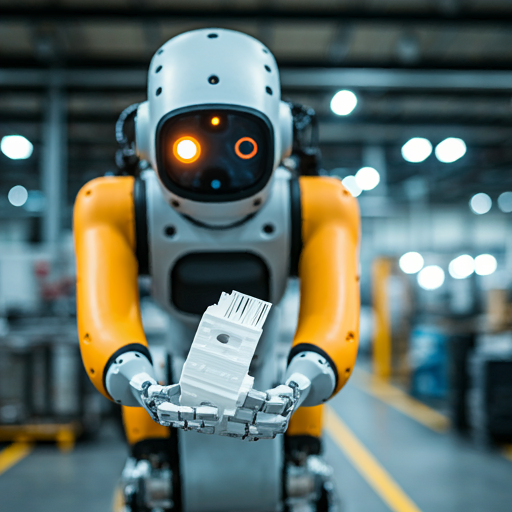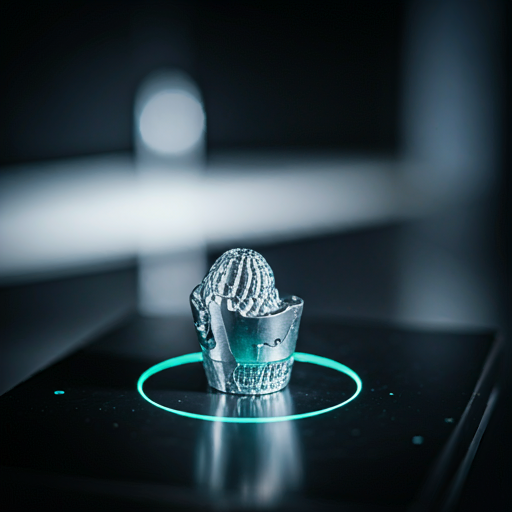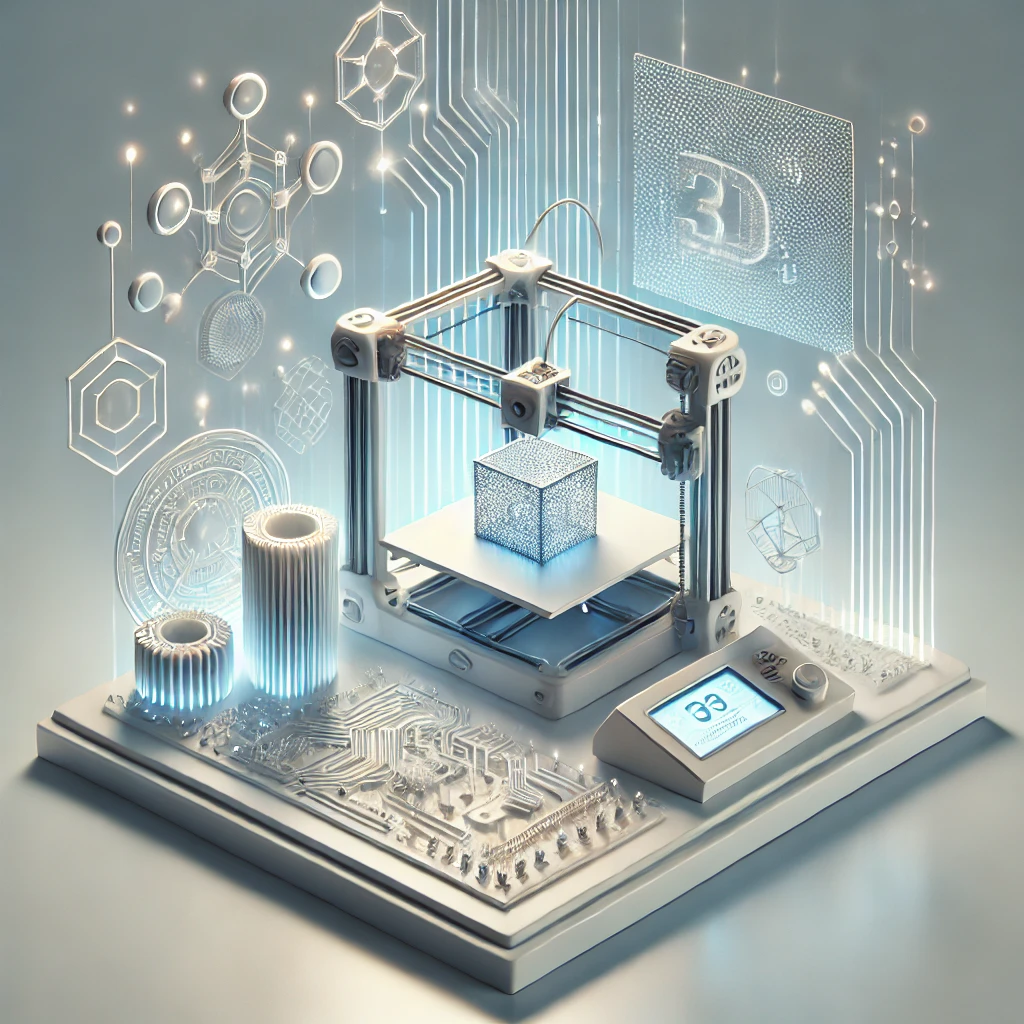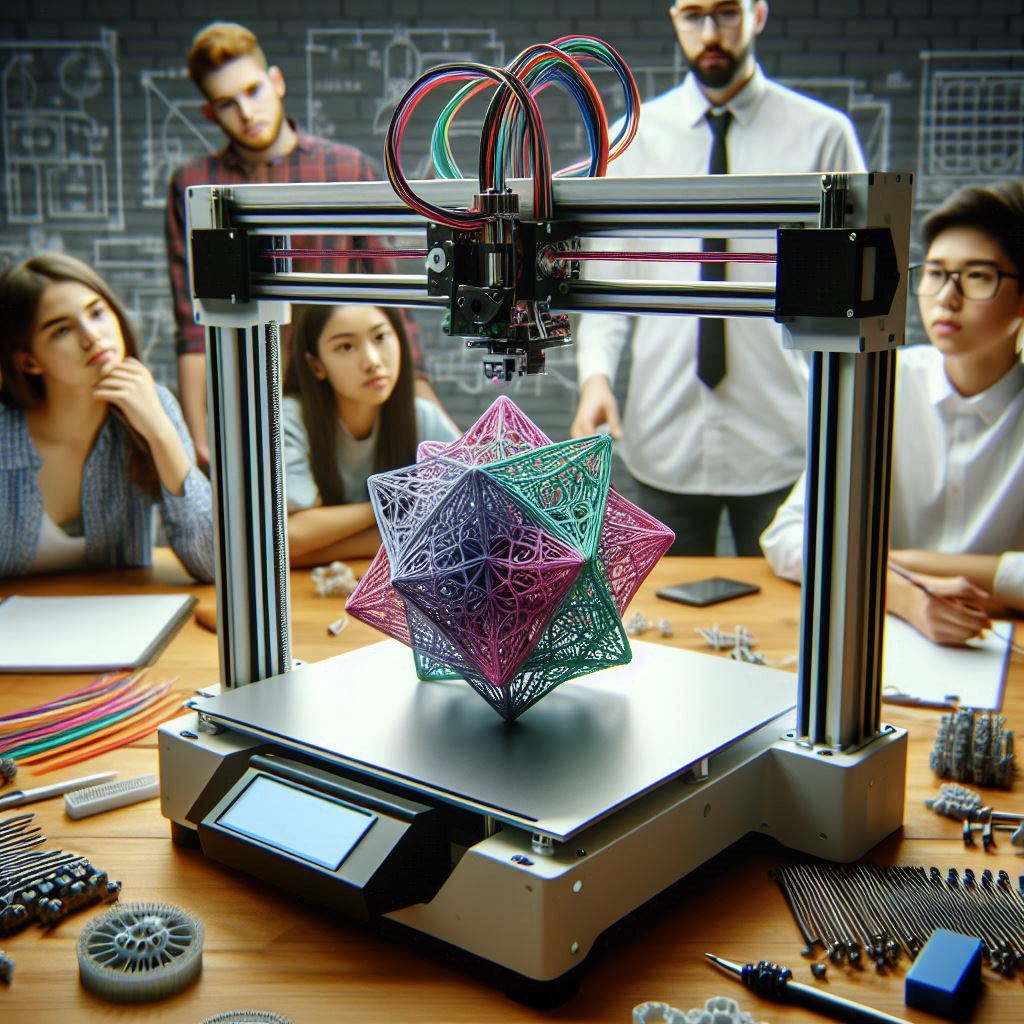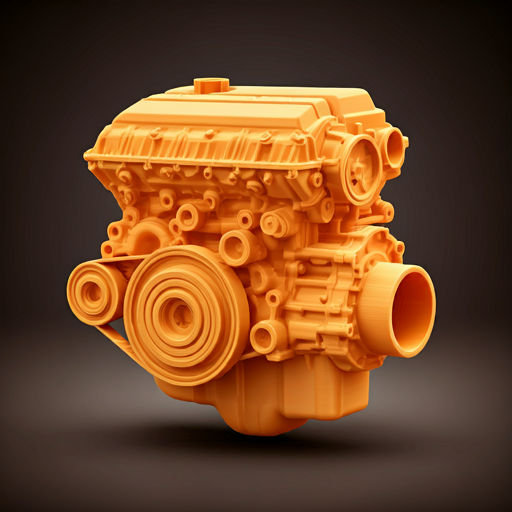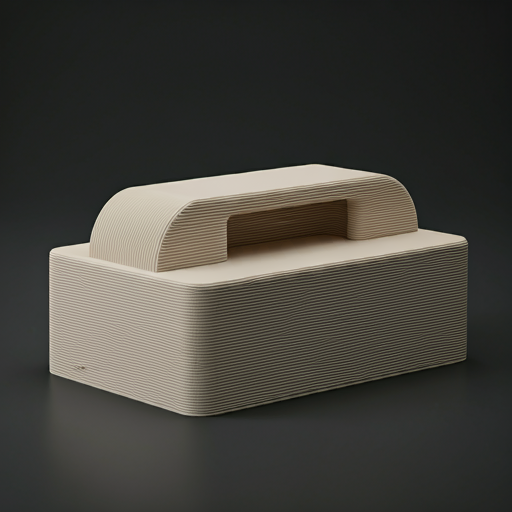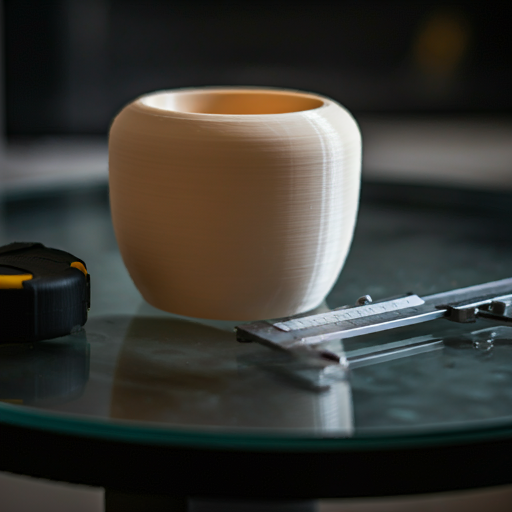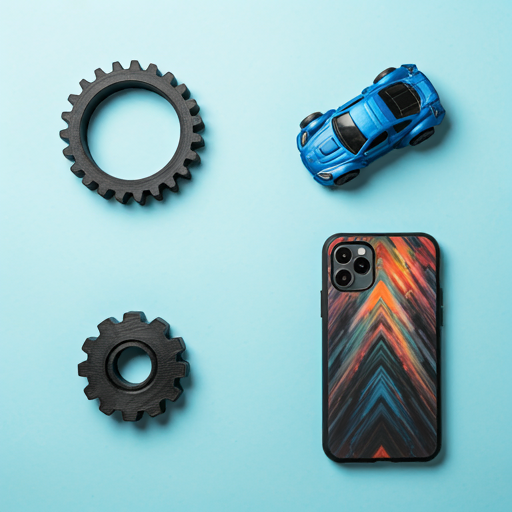
What is Prototype?
A prototype is an early sample, model, or release of a product built to test a concept or process, serving as a preliminary version from which other forms are developed. It is used in various fields, such as product design, software development, engineering, and research, to visualize, test, and refine functionality, design, and usability before full-scale production. Prototypes can range from simple, low-fidelity models to detailed, high-fidelity versions, and can include physical, digital, functional, or experimental types. The iterative nature of prototyping allows for the identification and resolution of issues early, ensuring the final product meets user needs and expectations.
What Is Rapid Prototyping ?

Rapid prototyping is a group of techniques used to quickly fabricate a scale model or a working prototype of a physical part or assembly using three-dimensional computer-aided design (CAD) data. These techniques are widely used in product design and manufacturing to accelerate the development process, allowing designers and engineers to quickly iterate, test, and refine their concepts. Here are the key aspects and benefits of rapid prototyping:
Key Aspects of Rapid Prototyping

- Additive Manufacturing : Most rapid prototyping techniques are based on additive manufacturing, where material is added layer by layer to build the prototype. Common methods include 3D printing, stereolithography (SLA), and selective laser sintering (SLS).
- Speed : The primary advantage of rapid prototyping is speed. Traditional prototyping methods can take weeks or months, while rapid prototyping can produce a prototype in hours or days, significantly reducing the time to market.
- Cost-Effective : Rapid prototyping reduces the cost of prototype development. Since it often involves automated processes and less manual labor, it is generally cheaper than traditional prototyping methods, especially for complex designs.
- Iterative Development : Rapid prototyping supports an iterative design process. Designers can quickly create multiple iterations of a prototype, test them, gather feedback, and make necessary adjustments. This iterative process helps in refining the design efficiently.
- Complex Geometries : Rapid prototyping techniques can produce complex and intricate geometries that would be difficult or impossible to achieve with traditional manufacturing methods. This capability allows for more innovative and sophisticated designs.
- Material Variety : A wide range of materials can be used in rapid prototyping, including plastics, metals, ceramics, and composites. This variety allows prototypes to closely mimic the properties of the final product.
Benefits of Rapid Prototyping

- Enhanced Visualization : Rapid prototyping provides a tangible representation of the design, making it easier for designers, stakeholders, and clients to visualize and understand the product.
- Improved Communication : Physical prototypes improve communication between designers, engineers, and other team members, ensuring that everyone has a clear understanding of the design and its functionality.
- Early Detection of Design Flaws : By creating physical models early in the development process, design flaws and issues can be identified and addressed sooner, reducing the risk of costly changes later in the production cycle.
- Reduced Development Time : By streamlining the design and testing phases, rapid prototyping helps in reducing the overall development time, allowing companies to bring products to market faster.
- Flexibility in Design Changes : The ability to quickly make and test changes to the prototype allows for greater flexibility in the design process, enabling designers to experiment with different ideas and solutions.
Limitations of Rapid prototyping
- Material Constraints : Not all materials used in traditional manufacturing are available for rapid prototyping. This can limit the accuracy of testing material properties and performance. The materials used in rapid prototyping, especially in 3D printing, may not perfectly replicate the mechanical, thermal, or chemical properties of production-grade materials.
- Surface Finish and Detail : Rapid prototyping techniques, particularly 3D printing, can produce parts with rough surfaces that require additional finishing processes to achieve a smooth finish. Some rapid prototyping methods may not be able to capture very fine details or intricate features, which could be a limitation for highly detailed or complex designs.
- Strength and Durability : Prototypes created using additive manufacturing may have weaker structural integrity compared to parts produced with traditional methods. Layer-by-layer construction can introduce points of weakness.
- Size Constraints : The size of the prototypes is often limited by the build volume of the rapid prototyping machine. Large parts may need to be produced in sections and assembled, which can introduce additional complexity and potential points of failure.
- Cost for Large Production : While rapid prototyping is cost-effective for small quantities and iterative development, it can be expensive for larger production runs compared to traditional manufacturing techniques like injection molding or CNC machining.
- Post-Processing Requirements : Many rapid prototypes require post-processing steps such as sanding, polishing, painting, or curing to achieve the desired finish and properties. These steps can add time and cost to the prototyping process.
Common Rapid Prototyping Techniques:
- 3D Printing : A popular method where a digital model is sliced into layers and a 3D printer builds the object layer by layer using materials like plastic, resin, or metal.
- Stereolithography (SLA) : Uses a UV laser to cure liquid resin into hardened plastic in a layer-by-layer process.
- Selective Laser Sintering (SLS) : Uses a laser to sinter powdered material, binding it together to create a solid structure.
- Fused Deposition Modeling (FDM) :Involves extruding thermoplastic material layer by layer to build the prototype.
- Digital Light Processing (DLP) : Similar to SLA, but uses a digital light projector screen to flash a single image of each layer all at once.
What is Traditional Prototyping ?

Traditional prototyping is the process of creating physical models of a product using manual or conventional manufacturing methods before the advent of modern digital and additive manufacturing technologies. This approach has been used for decades in various industries, including automotive, aerospace, consumer goods, and architecture. Traditional prototyping involves several key aspects and methodologies:
Key Aspects of Traditional Prototyping:
- Manual Craftsmanship : Traditional prototyping often relies on skilled craftsmen and technicians to manually create prototypes using tools and machinery. This process can be labor-intensive and time-consuming.
- Subtractive Manufacturing : Unlike additive manufacturing used in rapid prototyping, traditional prototyping typically involves subtractive manufacturing methods, where material is removed from a solid block to create the desired shape. Common techniques include milling, turning, and drilling.
- Material Variety : Traditional prototypes can be made from a variety of materials, including wood, metal, plastic, clay, and foam. The choice of material depends on the prototype’s purpose, required properties, and the stage of development.
- Detailed Work : Creating traditional prototypes often involves intricate and detailed work, including sculpting, molding, and casting. These methods require a high level of precision and craftsmanship.
- Iterative Process : Similar to rapid prototyping, traditional prototyping can be an iterative process. Multiple versions of a prototype may be created and refined based on feedback and testing results.
Benefits of Traditional Prototyping

- High Fidelity : Traditional prototyping can produce highly detailed and accurate models, particularly when done by skilled craftsmen. This can be crucial for aesthetic and functional evaluation.
- Material Properties : Traditional methods can use the same or similar materials as the final product, allowing for accurate testing of properties such as strength, flexibility, and durability.
- Customization : Manual techniques allow for a high degree of customization and flexibility, making it easier to incorporate unique design elements or adjustments.
- Tactile Feedback :Physical prototypes provide a tangible representation of the product, which can be important for assessing ergonomics, fit, and finish.
Limitations of Traditional Prototyping
- Time-Consuming : Traditional prototyping methods involve meticulous craftsmanship and manual processes, which inherently take considerable time. Each prototype iteration requires extensive handling and fabrication, leading to prolonged development cycles.
- High Cost : The reliance on skilled artisans and the use of specialized tools and materials contribute to higher production costs in traditional prototyping. Skilled labor commands higher wages, and the intricate nature of manual assembly and finishing increases operational expenses.
- Limited Iterations : Due to the time and cost involved, traditional prototyping often allows for only a limited number of iterations. This limitation restricts the ability to thoroughly explore and refine design alternatives or address unforeseen issues that may arise during development.
- Material Constraints : Traditional prototyping methods may limit the availability of materials suitable for shaping or manipulation. Certain materials used in final production may not be compatible with traditional fabrication techniques, limiting the ability to accurately simulate material properties and performance characteristics.
- Size and Scale Limitations : Building large-scale prototypes manually poses logistical challenges in handling and assembly. Managing intricate details and maintaining consistency across oversized components can introduce dimensional inaccuracies and structural weaknesses.
Common Traditional Prototyping Techniques:
- Hand Carving and Sculpting : Using tools to carve and shape materials like wood, clay, or foam to create detailed models.
- Machining : Utilizing machine tools such as lathes, mills, and drills to remove material and create precise components from metal, plastic, or wood.
- Casting and Molding : Creating molds from materials like plaster or silicone and then casting prototypes using metals, plastics, or other materials to achieve the desired shape and detail.
- Fabrication and Assembly : Combining various materials and components through processes like welding, gluing, and fastening to build the prototype.
Application of Rapid Prototyping

- Automotive and Aerospace : In these industries, rapid prototyping is used to test and refine parts for vehicles and aircraft. It helps engineers see how parts will perform under different conditions. They can make changes quickly to improve things like fuel efficiency and safety.
- Consumer Goods and Electronics : Rapid prototyping accelerates the development of prototypes for consumer products, including household appliances, electronics, and wearable devices. It allows companies to test ergonomic designs, functionality, and user interfaces early in the product development cycle. Rapid iteration based on user feedback ensures that final products meet consumer preferences and market demands while reducing time-to-market and development costs.
- Education and Research : Educational institutions leverage rapid prototyping to teach design principles, manufacturing processes, and advanced technologies to students. Researchers utilize 3D printing and rapid prototyping techniques to explore new materials, develop prototypes for experiments, and innovate in various fields such as robotics, renewable energy, and biotechnology.
- Medical and Healthcare : Rapid prototyping plays a pivotal role in healthcare by enabling the creation of patient-specific models, surgical guides, and custom medical devices. It supports personalized medicine by facilitating the customization of prosthetics, implants, and orthotics to match individual patient anatomy.
- Engineering and Manufacturing : Engineers use rapid prototyping to create test versions of new parts and products. This lets them check if designs are strong and work as expected. Industries such as aerospace and automotive use it to perfect complex parts before making them in large numbers.
- Product Design and Development : Rapid prototyping helps designers quickly turn their digital designs into physical prototypes. This allows them to see how products will look and work early on. It's especially useful in industries like electronics, where companies can test and improve designs before making them in large quantities.
Application of Traditional Prototyping

- Product Development : Traditional prototyping involves creating physical models of products using manual techniques such as machining, carving, or molding. This allows designers and engineers to evaluate the form, fit, and function of new products before moving to mass production.
- Architectural Design : Architects use traditional prototyping to create scale models of buildings and structures. These physical models help visualize how designs will look in real life and allow architects to make adjustments to improve functionality and aesthetics. It's an essential tool for presenting designs to clients and stakeholders.
- Artistic and Sculptural Modeling : Artists and sculptors use traditional prototyping techniques like carving and sculpting to create detailed models and sculptures. These physical prototypes allow artists to explore different forms and textures and refine their artistic vision. It's an integral part of the creative process in art and sculpture.
- Medical Prototyping : In the medical field, traditional prototyping is used to create prototypes of medical devices and equipment. This includes using machining and molding to produce prototypes for testing and validation. It's essential for ensuring that medical devices meet regulatory standards and perform safely and effectively in clinical settings.
Traditional prototyping remains valuable in various industries where the tactile feedback and precise craftsmanship of physical models are essential for design validation, testing, and customization. While rapid prototyping has gained popularity for its speed and flexibility, traditional methods continue to play a crucial role in certain applications where material properties, detailed craftsmanship, and specific production requirements are paramount.
Conclusion
In conclusion, while both rapid prototyping and traditional printing serve essential roles in manufacturing and design, each approach offers distinct advantages depending on the project's needs. Rapid prototyping excels in speed, customization, and iterative design processes, making it ideal for quickly refining concepts and creating prototypes with complex geometries. Conversely, traditional printing methods like injection molding and CNC machining offer higher production volumes and lower per-unit costs once initial setup is complete, making them more suitable for large-scale manufacturing.
Please go through this video to get more description
Ultimately, the choice between rapid prototyping and traditional printing hinges on factors such as project scale, budget, timeline, and specific design requirements. By understanding the strengths of each method, designers and manufacturers can leverage these technologies to achieve optimal results in product development and production.
For any further inquiries regarding the comparison between rapid prototyping and traditional prototyping methods, we encourage you to contact us by visiting our official website. Feel free to share this insightful content with others to enhance understanding and awareness of the differences between these two crucial technologies. By fostering broader awareness, we aim to inspire innovation and accelerate the adoption of advanced prototyping methods across various industries. Together, we can drive forward progress and empower businesses to achieve greater efficiency and creativity in their product development endeavors.

